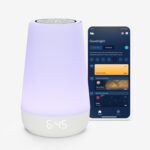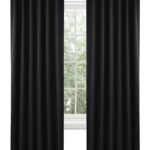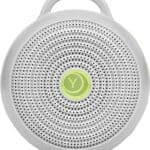As new parents, one of the biggest concerns is ensuring a peaceful night’s sleep for your little one, and surprisingly, the color of their night light can make a huge difference. Studies have shown that the right light color can promote relaxation and help regulate a baby’s natural sleep patterns. In this guide, we’ll explore what color light is best for baby sleep, helping you create a calm, sleep-friendly environment that supports your child’s rest.

*This post includes affiliate links, which means if you make a purchase through one of these links, I earn a small commission at no extra cost to you. This helps me keep providing high-quality content on this site for free. Rest assured, I only recommend products that I would personally use and believe will be helpful for my readers.
What Color Light is Best for Baby Sleep? The Ultimate Guide for New Parents
As a new parent, ensuring your baby gets a good night’s sleep can feel like a constant struggle. You might have tried various bedtime routines, from soothing lullabies to a white noise machine, but have you considered how the types of light you use affect your child’s sleep? Recent studies show that the color and intensity of light can significantly influence your baby’s sleep patterns.
From disrupting the release of melatonin—the sleepy hormone—to promoting a calming sleep environment, light plays a crucial role in supporting healthy sleep. Understanding how artificial light impacts your baby’s developing circadian rhythm is key to creating an optimal sleep setting. By the end of this guide, you’ll know the best light to help your sleeping baby rest more soundly, particularly during those tricky middle of the night night feeds.
What Colors of Light Are Best for Baby Sleep?
When choosing the right night light for your baby’s room, it’s essential to consider not just the color, but how different types of light affect your baby’s sleep cycles.
1. Blue Light vs Red Light: The Impact on Melatonin
Light exposure influences the pineal gland in the brain, which controls the secretion of melatonin, the hormone that regulates sleep. Bright light, especially blue light and white light from screens and LED bulbs, suppresses melatonin production. This can make it harder for your baby to wind down for bedtime or wake more often in the middle of the night. While dim blue light might seem like a good idea, it can still hinder the body’s natural production of melatonin.
Red light and warm light on the other hand have minimal impact on the body’s melatonin levels. Studies have shown that using dim red light can help create a calming sleep environment for babies. This soft light is gentle enough not to interfere with the release of melatonin, making it the best light for maintaining your baby’s natural sleep rhythm.
2. The Science Behind Red and Amber Lights
A recent study from the Journal of Sleep Research found that using warm glow lights, such as red or amber, during the night promotes relaxation and faster sleep onset. These colors, with their longer wavelengths, don’t suppress melatonin, making them ideal for baby rooms. In contrast, white or green light can delay the secretion of melatonin, making it more challenging for your baby to fall back asleep.
If you’re worried about your baby waking up in the middle of the night and needing some light, opt for a dim red night light. This ensures your child has enough light to feel safe, without disrupting their sleep cycle.
Light Intensity and Its Effects on Baby’s Sleep
Beyond just color, the brightness or intensity of the light in your baby’s room matters too. Bright light, especially late in the day, can trick your baby’s body into staying awake by mimicking sunlight.
1. Bright vs Dim Lights
Babies are sensitive to bright light, which can overstimulate them, making it harder for them to relax. In fact, exposure to too much artificial light in the evening can prevent the body from recognizing that it’s time to rest. This is where complete darkness or a dim night light becomes valuable. A low-intensity light, such as a dim red light, works best for keeping the room calm and sleep-friendly.
2. Choosing the Right Intensity
When doing night feeds or diaper changes, opt for a soft light that provides just enough light to see without waking your baby completely. Low-light settings, like those found in baby night lights, offer gentle illumination without disturbing the sleep environment.
Parents can also try using hall lights with dimming features, instead of overhead lights, to create a softer ambiance that promotes better sleep times for your baby. A calm, gently lit room helps your baby fall back asleep after night feeds, ensuring a smoother transition back to sleep.
Why Red or Amber Lights Are Often Recommended
Warm light like red or amber is more than just soothing—it has physiological benefits that help your baby get a good night’s sleep.
^this is my all time favorite purchase and love the flexibility of the colors!
1. Warm Colors Promote Relaxation
Unlike bright light, warm glow colors like red and amber help relax the brain. These colors have longer wavelengths and don’t interfere with the pineal gland’s production of melatonin. As a result, your baby stays calm, making it easier to return to sleep after waking up in the middle of the night. This also helps prevent disruption in their natural sleep cycle.
2. Scientific Research Supporting Red Light for Sleep
Several recent studies show that using dim red light at night can promote better sleep quality. The use of warm light during nighttime care—like diaper changes or feedings—has been associated with improved melatonin levels in infants. Babies tend to fall back asleep faster when exposed to red light compared to bright light or even white light.
3. How to Use Red and Amber Lights Effectively
To get the most out of using red or amber lights, consider investing in adjustable baby night lights that allow you to customize both the color and intensity. Many parents have reported improved sleep by using dimmable red or amber night lights from popular brands like Hatch Rest. These lights provide a calming warm glow that supports better sleep for both babies and parents.
Creating the Optimal Sleep Environment
While choosing the best light is essential, other factors can enhance your baby’s sleep environment.
1. Use Blackout Curtains
One of the simplest ways to improve your baby’s sleep is by controlling external light. Blackout curtains block out bright light and help your baby understand that it’s time to rest. This is particularly useful during daytime naps or early mornings when the sun may rise too early for your baby’s sleep schedule.
2. Incorporate a White Noise Machine
Light isn’t the only environmental factor affecting sleep. Noise can also disrupt your baby’s rest. A white noise machine helps to mask sudden sounds, such as household noise or traffic, allowing your baby to stay asleep longer and more deeply. Pair this with a soft light or dim red light to create a peaceful and sleep-friendly atmosphere.
3. Maintain a Calm Nighttime Routine
A consistent bedtime routine that includes dimming the lights, swaddling, and quiet activities can help signal to your baby that it’s time to wind down. This routine should also incorporate reducing artificial light exposure at least 30 minutes before bed to promote natural melatonin production.
FAQs for What Color Light is Best for Baby Sleep
- What color light is best for baby sleep?
The best light for baby sleep is a dim red light or amber light. These warm lights don’t interfere with melatonin production, promoting a calm, sleep-friendly environment.
- Can bright light affect baby sleep?
Yes, bright light can disrupt your baby’s sleep by suppressing melatonin production. It’s best to use soft lights or a dim night light in your baby’s room, especially during nighttime care.
- Does green light or white light impact baby sleep?
Yes, both green light and white light can delay the release of melatonin, making it harder for your baby to fall asleep. Opt for warm glow colors like red or amber to encourage restful sleep.
- How much light should a baby night light provide?
A baby night light should provide just enough light for you to see without disrupting your baby’s sleep. Low-intensity, dimmable lights are ideal for nighttime care.
- Should I leave a hall light on during night feeds?
It’s best to avoid leaving bright lights on during night feeds. Instead, use a dim night light or warm light in the room to create a soothing environment that won’t disrupt your baby’s sleep cycle.
Helping your baby get a good night’s sleep starts with understanding how different types of light impact their sleep patterns. Bright light and blue light can disrupt the release of melatonin, while dim red light and warm light promote relaxation and better sleep. By optimizing the light in your baby’s room and maintaining a consistent bedtime routine, you’ll support healthier sleep habits for your child. Remember, choosing the right night light is key to a peaceful night for both your baby and you.
Recommended External Links:
- Sleep Foundation: How Light Affects Sleep
- American Academy of Pediatrics: Healthy Sleep Tips
- Healthline: 10 Tips to Get Your Kids to Sleep













